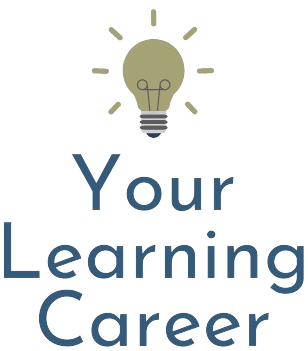If you are interviewing for learning and development jobs, there is a good chance you will be asked to give some kind of presentation. It is particularly likely if the position requires training delivery. This is usually one of the final stages if not the final stage of the process so you want to make sure to get it right.
There are a few key things to keep in mind as you prepare including:
- Picking a topic
- Customization
- Practice
- Timing
- Interactivity
I\’ve been on both sides of the process and will give you some tips to help you prepare for your training presentation interview.
Purpose of a Training Presentation Interview
Why would a company want to include a training presentation as part of the interview process? It actually makes a lot of sense. Speaking as someone who has been part of the interview process, I want to know if you can do what you said you can do on your resume and in the other interviews. You have claimed to be this great, dynamic speaker, now show me!
If you are able to effectively demonstrate what you can do in the classroom, it makes it a lot easier for the decision makers to make an offer.
Picking a Topic
One of the first areas to focus on is the topic. Now, oftentimes, a topic will be given to you. It will usually correspond with the type of training you are going to be designing or delivering in that role. For example, if the role is for a technical trainer responsible for training a software product, you might be asked to do a short training demonstration on that software. If the role is involved in leadership or customer service training then you could expect to present on one of those.
The good news with any topic you are given is that you usually still have a good amount of freedom with what you do with that topic. For example, if you are given the topic of \”customer service\”, there are a whole lot of directions you can go. Customer service over the phone, service while selling, service after the sale, how to deal with difficult customers, anticipating customer needs, etc…
Even in the case of a more specific topic like \”xyz software\” you will probably have some leeway around what aspect of the software you teach. For example, if the software is PowerPoint, topics could include how to create a template, how to animate a slide, how to use slide transitions, how to edit graphics in PowerPoint, etc…
I usually try to zone in on an area that I\’m very familiar with or, better yet, already have a presentation on. Or, at least a presentation with some similar content. That way, there is less rework to do and I can focus on customizing and practicing.
Sometimes, you will be told to present on \”anything\”. Now, you can take that at face value if you\’d like. You may think \”Cool! I\’ll do my presentation on why the Marvel Cinematic Universe is superior to the DC Cinematic Universe!\”
I would be very careful with picking a non-business/non-work related topic. It might work in the right situation. Most of the time, though, I would play it safe. Remember, you want the interviewers/decision makers to easily imagine you teaching an actual class for employees.
If you\’ve made it this far into the interview process, you should have a good idea of what types of classes you\’d be teaching in the role. I would pick a topic related to one of those.
Customization
Once you have your topic figured out, it\’s time to start planning out your presentation. If you already have a similar presentation you\’ve done before, you might be able to use that as a jumping off point. Sometimes, you might have something that can be used as is. Most of the time, though, you will need to make changes and updates.
Timing, for example. If you have a presentation that you have normally done in an hour, you will definitely have to pare it down. For an interview presentation, you are usually only going to have 15 – 20 minutes.
As you put the presentation together, I would also look for ways to incorporate the company you are interviewing with into it. For example, putting their logo into it. You can also look for opportunities to use any company slogans, policies or value statements throughout. Anything that shows you have a good understanding of the company while still relating to the topic.
Practice
This should go without saying but it\’s very important to practice the presentation before doing it for the interview. I can\’t tell you how many times I\’ve witnessed people who did well throughout the interview process and then bombed in the presentation phase.
It is usually pretty evident when a person didn\’t practice. They fumble and stumble. They sweat, cough, ask to start over. It\’s amazing how unprepared people can be. It\’s normal to be nervous for these types of presentations but I\’m talking about people who clearly did not prepare.
It can feel a little silly to practice. To basically talk to yourself in an empty room. But it is so important and helps tremendously for when you go to do the real thing.
Timing
The timing of the presentation should be pretty straight forward. You are usually told how much time you will have to present. A couple of pieces of advice about timing.
First of all, PRACTICE. Make sure your presentation fits within the timeframe you were given. You don\’t want to get up there and run out of time before you get to your best story or coolest activity or whatever. When I practice, I will use a stop watch and also pause for places where I am expecting some kind of audience interaction (e.g. questions, answers, etc…).
Nine times out of ten, my presentation takes LONGER than I thought. I usually have to go in and edit out some things to make sure I hit what I really want the interviewers to see/experience.
The other advice I have about the timing is to be flexible. In other words, even if they tell you that you have 20 minutes, you should have a back up plan for what you will cut out if necessary. I\’ve seen it happen and I\’ve also had it happen to me where, for whatever reason – technical, someone showed up late, etc… – the presentation ends up being cut short. You have to be able to roll with that. It also shows how you handle \”surprise\” situations in the classroom so it could benefit you that way as well.
Interactivity
If you want to be memorable in your training presentation interview, you HAVE to have some kind of interactivity. This is another area that just floors me when I am an interviewer for training positions. I see a lot of people who come in and just lecture. I\’m talking about people who have listed a good bit of training experience on their resume\’. How is it that they don\’t have a base understanding of how people learn? When a person gets up and lectures the entire time, they are an automatic \”no\” for me. Usually for the rest of the team too.
So, what kind of interactivity should you include? Much of that depends on your topic but at the very least, there should be opportunities built in where you are getting the audience to answer a question or share their experience. For example, if the topic is time management, you could ask for people to share their number one tip or method for how they manage their time.
It may also depend on how much time you are given to present. If you only have five or ten minutes, that will probably limit the kinds of activities you can include. But include something!
If you\’ve done any kind of training before, you probably have activities you\’ve used that you know work. That\’s usually where I start and then I modify accordingly. For example, if there was an icebreaker activity that worked great in new employee orientation I might modify that to fit into my presentation interview even if the topic is something different like leadership skills.
Wrap Up
Giving a training presentation as part of the interview process can definitely be nerve wracking. If you properly prepare yourself, though, you will be just fine. Following these few simple tips I\’ve listed will put you ahead of most of your competition and help you win the job!


Pingback: Insider’s Guide to Answering Corporate Trainer Interview Questions – Your Learning Career